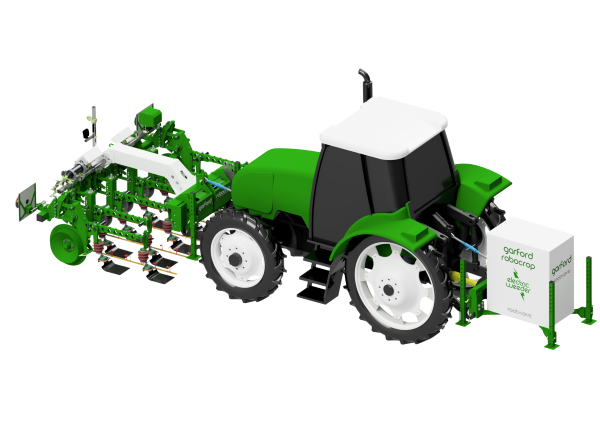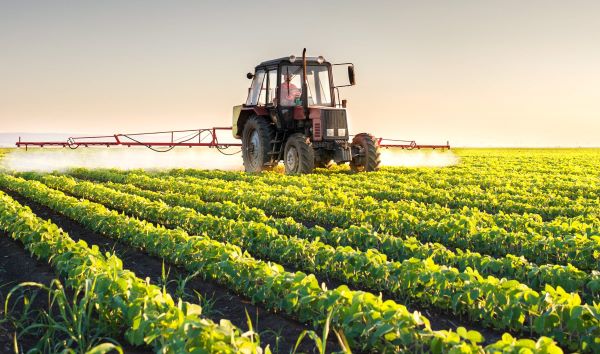Consequently, a wide variety of factors are making the job of farming more complex and challenging, whether that’s having to manage the impact of climate change, addressing labour shortages, or dealing with rising costs.
“Advancements in AgTech are responsible for smarter harvesting, the electrification of equipment and better data collection in order to make more informed decisions,” explained Josh Mickolio, a supplier business development manager, wireless and IoT, DigiKey. “In addition, advances in global connectivity have improved data communication speeds, even in extremely rural or high-altitude locations where farms are often located.
“Consequently, one of the AgTech solutions that is picking up a great deal of steam is precision agriculture, which relies heavily on technology to more accurately and efficiently complete farm tasks, whether it’s weed and pest control, tracking livestock, maintaining equipment or protecting soil health.”
Here in the UK, a manufacturer of technologically advanced mechanical weed control products, Garford Farm Machinery, has joined forces with the electrical weed control manufacturer RootWave, and is set to bring next generation weeding technology to UK and international markets.

New weeding technology and products, integrating electrical weeding into precision guided toolbar systems, for high-value and high-intensive crops as well as broadacre arable applications, are being developed.
The RootWave system uses electricity to boil weeds and their roots and because it is non-chemical and does not disturb the soil, it is compatible with both organic and regenerative farming systems.
Developed by Garford, a specialist in precision mechanical weed control, the Robocrop Vision Guidance System provides accurate and efficient hoeing and uses video cameras and image analysis computers to locate crop positions and to then guide the hoes quickly and accurately.
Garford has calculated that by using the eWeeding technology, across a variety of different systems, estimated costs would come in between £55 to £120 per hectare, which would be significantly lower than using chemical herbicides.
According to Garford Managing Director Jonathan Henry, “With the increasingly stringent controls over the use of chemical weed management, alongside resistance issues, we can support UK and global agriculture as it embraces its environmental responsibilities. Combining our technologically advanced precision guided weed control solutions, with the benefits of RootWave’s high frequency alternating current electrical weeding technology, we can create commercially viable and effective solutions to growers, as a key part of a sustainable, integrated weed management system.”
Not only does precision agriculture deliver more efficiency it also aims to use energy and resources more effectively.
Technology Enables Evolution
During the 1980s and 1990s, there was increasing public scrutiny of the use of pesticides and chemicals in agriculture operations, and advances in GPS technology led to its installation in tractors and combines.
“Over the following decades, connectivity solutions have continued to improve, enabling faster data transfer for both cloud and edge computing globally. Additionally, the capabilities of autonomous solutions have accelerated in recent years, such as improvements in optics processing, the growth of artificial intelligence and the introduction of solid-state LiDAR – all of which add up to advancements for precision agriculture,” said Mickolio.
“In order to realise its full potential, precision agriculture requires a robust foundation, which often means a deep well of data points. That data is collected and measured by a wide variety of hardware and software solutions.”
As a result, sensors are one of the most heavily used hardware solutions in farms – they are essential to gathering data to inform decision-making. These sensors are incredibly rugged, able to withstand many environmental factors such as high and low temperatures, extreme weather, chemical exposure, dirt, vibration, animals and much more.
Sensors used in AgTech tend to buck the “miniaturisation” trend seen in so many other component categories, according to Mickolio, because they’re being installed on large farming equipment, there is usually more room to house them alongside other electronics or install extra protection inside the unit.
Improved sensor technology ultimately leads to better, more precise results for farmers, such as better equipment positioning and monitoring, better moisture and sunlight detection, increased comfort for drivers and passengers.
Some of the most commonly used applications of precision AgTech on the farm include:
- Soil Health: mapping and monitoring fields for optimised application of nutrients, pesticides or irrigation
- Livestock Management: tracking animal behavior and health; automated feeding or milking systems for enhanced productivity
- Crop Monitoring: computer vision-assisted harvesting and weeding, ensuring that crops are in the ideal condition for harvesting or targeting only harmful weeds with pesticide sprayers; as well as the use of drones and satellites for collecting aerial data
- Maintaining Equipment: monitoring vehicle and equipment health; flagging issues and parts needing replacement to prevent expensive breakdowns
“As technology continues to scale and evolve toward precision and adaptability, farmers will reap the rewards, which range from increased land or livestock productivity to less reliance on manual labour and staffing, as well as positive environmental impacts from using fewer inputs,” according to Mickolio.
Connector innovation
But while farming methods are changing more traditional technologies, such as connectors, also need to adapt.
Farms are increasingly using technology, from drones and field sensors to autonomous harvesting equipment and cab-mounted GPS units to send data back-to-base. But with these changes farmers will also need to upgrade their equipment as they go and one such component that’s easy to overlook is the humble connector.
It’s responsible for delivering power, connecting cameras to screens in the tractor cab, and allowing the operator to send control signals to harvesting attachments. Being used so often, it is essential connectors used in farming equipment are designed to handle various harsh conditions.
Growing complexity means farmers will need to consider the ability to transfer power and high-speed data effectively and this might require high bandwidth fibre optic cables that collect and process the data from all the sensors as well as the wireless control signals from the remote operator.

More advanced connectors are now making use of the ISO-Bus platform, a system that allows farmers to employ different equipment from different manufacturers with the same tractor and towing vehicles, increasing compatibility as a result.
Connector specialists, such as PEI-Genesis, are designing fully modular connector assemblies that farmers can use to integrate multiple types of connectors into a single plate to meet their needs – swapping the inserts when they need to upgrade cables or configuration of contacts and which allows farmers to upgrade their system without incurring additional testing, drawing, reengineering and production costs.
The Future of AgTech
Advanced technology solutions can help farmers automate the critical processes that are crucial to reaching the scalability needed to satisfy rising demand. AgTech helps to eliminate or reduce costs in many areas, such as purchasing fewer chemicals and avoiding waste, or hiring less human labour as well as reducing equipment downtime.
“Of course, implementing new technology can come with its own set of challenges,” said Mickolio. “To enable mass adoption of precision agriculture, technology providers must be prepared to scale solutions easily and cost-effectively across the globe.”
The farming industry operates with razor-thin margins but can now not only purchase new equipment with precision agriculture capabilities, but also retrofit existing equipment for a more cost-effective solution.
As Mickolio concluded, “From generation to generation, technology will continue to evolve rapidly and adapt to current and future needs, improving the adoption rate of precision agriculture. By focusing on farming insights and automation at the plant level, the world can not only farm better, but farm different.”













